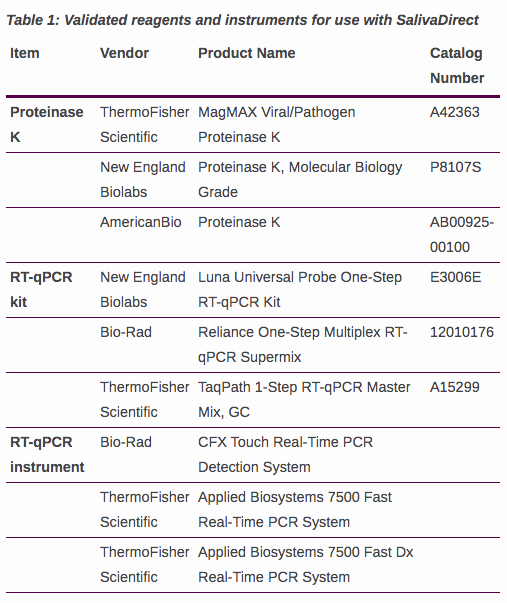
⚡️Our multiplex PCR assay has been updated to detect #SARSCOV2 variants B.1.1.7, B.1.351, and P.1 by targeting 2 deletions:
-ORF1a 3575-3677
-spike 69-70.
Preprint submission later today, short 🧵 for now 1/n
Detailed protocol: protocols.io/view/multiplex…
-ORF1a 3575-3677
-spike 69-70.
Preprint submission later today, short 🧵 for now 1/n
Detailed protocol: protocols.io/view/multiplex…

2/n This protocol is an update from our developmental versions that we previously posted on twitter and virological.
https://twitter.com/NathanGrubaugh/status/1349114439543508994?s=20
3/n Adding the ORF1a 3675-3677 deletion was key, and s/o to @richardneher for the tip.
https://twitter.com/richardneher/status/1349117613499166722?s=20
4/n The 9 nucleotide ORF1a deletion is found in all three of the B.1.1.7, B.1.351, and P.1 VOCs (perhaps likes to co-occur w/ 501Y). By combining with the spike 69/70 deletion, we can then differentiate B.1.1.7 from the others and generate data to compare to TaqPath SGTF results. 

5/n The assay isn't perfect for B.1.351 though as ~18% of the genomes in this clade have the ORF1a 3675-3677 deletion filled back in. Some of these may be processing errors, but @richardneher thinks that some are real and will be something to watch. (recombination 🤔) 

6/n We designed probes to the non-deleted reference sequences so that they cause "target failures" or "drop outs" when the ORF1a and/or spike deletions are present. We included the CDC N1 set as a control. The primer/probe sequences can be found in our protocol 👆 

7/n Here is how to interpret the data - though remember that whole genome sequencing is required to definitively assay any virus to a lineages. 

8/n Validation. We first use synthetic RNA from a virus w/o deletions (Wuhan-Hu-1) and with both deletions (B.1.1.7) to determine the assay limits. We don't see any false "drop outs", though we don't recommend calling drop outs when N1 CT = 35-40. 

9/n We also tested clinical samples: 19 w/o either deletion, 42 w/ only 69-70 del (e.g. B.1.375 that is NOT a VOC), and 16 B.1.1.7 samples with both. All sequenced to confirm. The drop out profiles matched 100% with what we expected. Complete data to presented in our pre-print.
10/n While we expect these to work with our assay, we have not yet been able to test clinical samples with B.1.351 and P.1 due to access limitations. Hopefully we can fill this gap soon.
11/n We will send reagent kits and provide authorship to anyone who has access to B.1.351 and P.1 clinical samples and is willing to test our assay 🙏
@Tuliodna, @nmrfaria, @estercsabino ????
@Tuliodna, @nmrfaria, @estercsabino ????
12/n On the PCR development front, we are also working on creating a SYBR green screening assay using the ORF1a deletion. More on that soon.
13/13 Finally, a huge thanks 🙏 to everyone that has helped with this, especially @VogelsChantal & @JosephFauver who led our development efforts, and y'all twitterers for the consistent feedback. Really great use of this platform 🍻
definitively *assign* any virus to a lineage...
• • •
Missing some Tweet in this thread? You can try to
force a refresh










